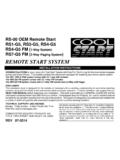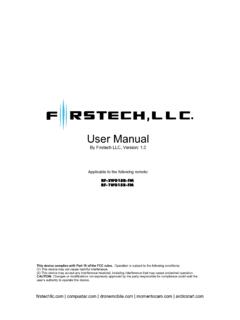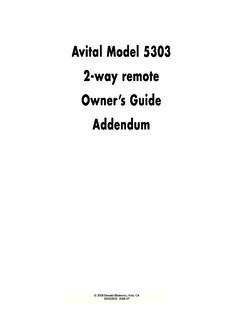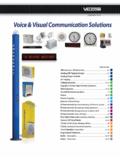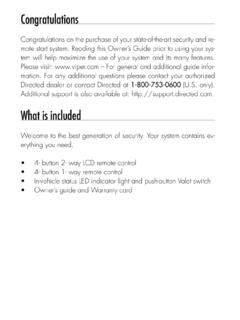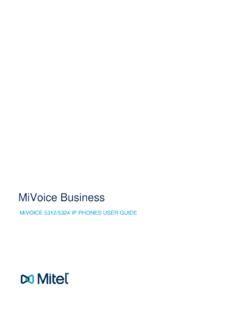Transcription of About the Tutorial - Current Affairs 2018, Apache Commons ...
1 operating system 1 About the Tutorial An operating system (OS) is a collection of software that manages computer hardware resources and provides common services for computer programs. The operating system is a vital component of the system software in a computer system . This Tutorial will take you through step-by-step approach while learning operating system concepts. Audience This Tutorial has been prepared for the computer science graduates to help them understand the basic to advanced concepts related to operating system .
2 Prerequisites Before you start proceeding with this Tutorial , we are making an assumption that you are already aware of basic computer concepts like what is keyboard, mouse, monitor, input, output, primary memory and secondary memory etc. If you are not well aware of these concepts, then we will suggest to go through our short Tutorial on Computer Fundamentals. Copyright & Disclaimer Copyright 2016 by Tutorials Point (I) Pvt. Ltd. All the content and graphics published in this e-book are the property of Tutorials Point (I) Pvt.
3 Ltd. The user of this e-book is prohibited to reuse, retain, copy, distribute or republish any contents or a part of contents of this e-book in any manner without written consent of the publisher. We strive to update the contents of our website and tutorials as timely and as precisely as possible, however, the contents may contain inaccuracies or errors. Tutorials Point (I) Pvt. Ltd. provides no guarantee regarding the accuracy, timeliness or completeness of our website or its contents including this Tutorial .
4 If you discover any errors on our website or in this Tutorial , please notify us at operating system 2 Table of Contents About the Tutorial .. 1 Audience .. 1 Prerequisites .. 1 Copyright & Disclaimer .. 1 Table of Contents .. 2 1. operating system OVERVIEW .. 1 Definition .. 1 Memory Management .. 2 Processor Management .. 2 Device Management .. 2 File Management .. 2 Other Important Activities .. 3 2. operating system TYPES .. 4 Batch operating system .. 4 Time-sharing operating Systems .. 4 Distributed operating system .
5 5 Network operating system .. 5 Real-Time operating system .. 6 3. operating system SERVICES .. 7 Program Execution .. 7 I/O Operation .. 7 File system Manipulation .. 8 Communication .. 8 Error Handling .. 8 Resource Management .. 9 operating system 3 Protection .. 9 4. operating system PROPERTIES .. 10 Batch Processing .. 10 Multitasking .. 11 Multiprogramming .. 12 Interactivity .. 13 Real-Time Systems .. 13 Distributed Environment .. 13 Spooling .. 13 5. operating system PROCESSES .. 15 Process .. 15 Program.
6 16 Process Life Cycle .. 16 Process Control Block (PCB).. 17 6. operating system PROCESS SCHEDULING .. 19 Definition .. 19 Process Scheduling Queues .. 19 Two-State Process Model .. 20 Schedulers .. 20 Long-Term Scheduler .. 20 Short-Term Scheduler .. 20 Medium-Term Scheduler .. 21 Comparison among Schedulers .. 21 Context Switch .. 21 7. operating system SCHEDULING ALGORITHMS .. 23 First Come, First Served (FCFS) .. 23 operating system 4 Shortest Job Next (SJN) .. 24 Priority Based Scheduling .. 25 Shortest Remaining Time.
7 26 Round Robin Scheduling .. 26 Multiple-Level Queues Scheduling .. 27 8. operating system MULTITHREADING .. 28 What is a Thread? .. 28 Difference between Process and Thread .. 29 Advantages of Thread .. 29 Types of Thread .. 29 User Level Threads .. 29 Kernel Level Threads .. 30 Multithreading Models .. 31 Many-to-Many Model .. 31 Many-to-One Model .. 32 One-to-One Model .. 33 Difference between User-Level & Kernel-Level Thread .. 34 9. operating system MEMORY MANAGEMENT .. 35 Process Address Space .. 35 Static vs Dynamic Loading.
8 36 Static vs Dynamic Linking .. 36 Swapping .. 36 Memory Allocation .. 38 Fragmentation .. 38 Paging .. 39 Segmentation .. 42 operating system 5 10. operating system VIRTUAL MEMORY .. 43 Demand Paging .. 44 Page Replacement Algorithm .. 46 Reference String .. 46 First In First Out (FIFO) Algorithm .. 46 Optimal Page Algorithm .. 47 Least Recently Used (LRU) Algorithm .. 48 Page Buffering Algorithm .. 48 Least Frequently Used (LFU) Algorithm .. 48 Most Frequently Used (MFU) Algorithm .. 48 11. operating system I/O HARDWARE.
9 49 Device Controllers .. 49 Synchronous vs Asynchronous I/O .. 50 Communication to I/O Devices .. 50 Polling vs Interrupts I/O .. 52 12. operating system I/O SOFTWARE .. 54 Device Drivers .. 55 Interrupt handlers .. 55 Device-Independent I/O Software .. 55 User-Space I/O Software .. 56 Kernel I/O Subsystem .. 56 13. operating system FILE 57 File .. 57 File Structure .. 57 File Type .. 57 File Access Mechanisms .. 58 operating system 6 Space Allocation .. 58 14. operating system SECURITY .. 60 Authentication.
10 60 One Time passwords .. 60 Program Threats .. 61 system Threats .. 61 Computer Security Classifications .. 62 15. operating system LINUX .. 63 Components of Linux system .. 63 Kernel Mode vs. User Mode .. 64 Basic Features .. 64 Architecture .. 65 operating system 1 An operating system (OS) is an interface between a computer user and computer hardware. An operating system is a software which performs all the basic tasks like file management, memory management, process management, handling input and output, and controlling peripheral devices such as disk drives and printers.










